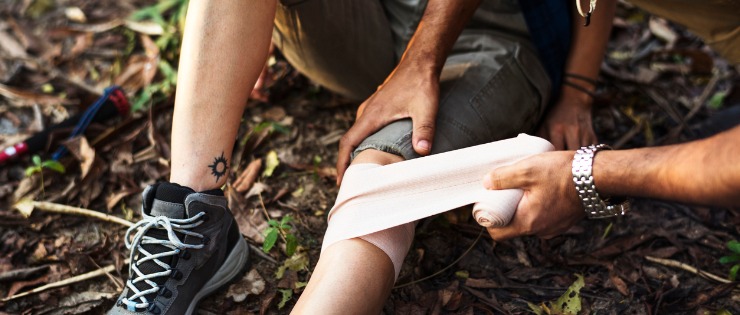Although relatively rare, snake Bites can pose serious threats to human health and well-being. Whether you’re an outdoor enthusiast, a nature-lover, or simply find yourself in snake-prone areas, it is crucial to understand the basics of snake bite first aid and the role of antivenom in the treatment process. This blog aims to shed light on handling snake bites in emergencies, emphasising the importance of prompt and appropriate action.
What do Snake Bites look like? What are the signs and symptoms of snake bites?
Not all snake bites are created equal. Did you know that different snake species inject varying amounts and types of venom, which can result in a range of symptoms? Symptoms generally appear within an hour or so, but in children they may appear within minutes.
Common signs of a snake bite include:
- Localised pain
- Swelling
- Bruising;
- Difficulty breathing
- Nausea
- Paralysis
Immediate identification of a snake bite is crucial for administering proper first aid.
What is the proper treatment for a snake bite?
- Stay Calm: The most important thing is to remain calm, panic can exacerbate the situation by increasing heart rate and venom absorption. Encourage the patient to remain as calm and still as possible.
- Remove jewellery and tight clothing: Swelling is a common reaction to snake bites and removing constrictive items can help mitigate complications.
- Immobilise the bite area: Keep the affected limb immobilised AND at or slightly below heart level.
- Compress: Using a compression bandage, apply a Pressure Immobilisation Technique (PIT) to the affected limb.
- Reduce movement: Use a splint or bandage to restrict movement.
- DO NOT SUCK or CUT the wound: Contrary to popular belief, attempting to suck out venom can lead to infection and cutting the wound increases the risk of bleeding.
Always SEEK medical HELP:
- Call 000 emergency services immediately.
- The ambulance will come directly to the patient. Ensure the patient remains still lying where they were bitten.
- Provide the emergency medical personnel with as many details about the snake as possible. In Australia, all Australian snakes are covered by the one generic antivenom. If the snake is a non-native Australian species, inform the medical personnel immediately.
Understanding Anti-venom: How it works, administering & side effects
Antivenom, also known as antivenin, is a life-saving treatment for snake envenomation (snake bites). It is created by immunizing animals, typically horses or sheep, with small amounts of snake venom. The animal’s immune system produces antibodies in response, and these antibodies are then harvested and purified to create antivenom.
How does Anti-Venom work?
- It neutralises venom by binding to its molecules
- This binding process prevents the venom from causing further harm
Administering Antivenom
- It is typically administered intravenously.
- The timing of antivenom administration is critical; the sooner it is given, the more effective it is in preventing severe complications.
What are the side effects of antivenom?
- While generally safe, allergic reactions can occur to antivenom.
- Medical professionals are trained to manage any reactions and balance the risks and benefits of antivenom administration
- Serum sickness is a delayed reaction that can occur 4-14 days after receiving anti-venom. The most common signs of delayed serum sickness is a fever, rash, muscle or joint pain and generally feeling unwell.
In conclusion, being prepared for snake bites involves more than just knowledge; it requires a calm and quick response. By understanding the basics of first aid and the role of antivenom, individuals can contribute to a positive outcome in snake bite emergencies. Remember, prevention is the best strategy, so stay informed, stay alert, be cautious in snake-prone areas, and always seek professional medical help in the event of a snake bite.
Don’t forget, visit our Blog page for more articles on other interesting topics.
Shop our Snake First Aids kits here so you can always be prepared for a snake bite emergency.
